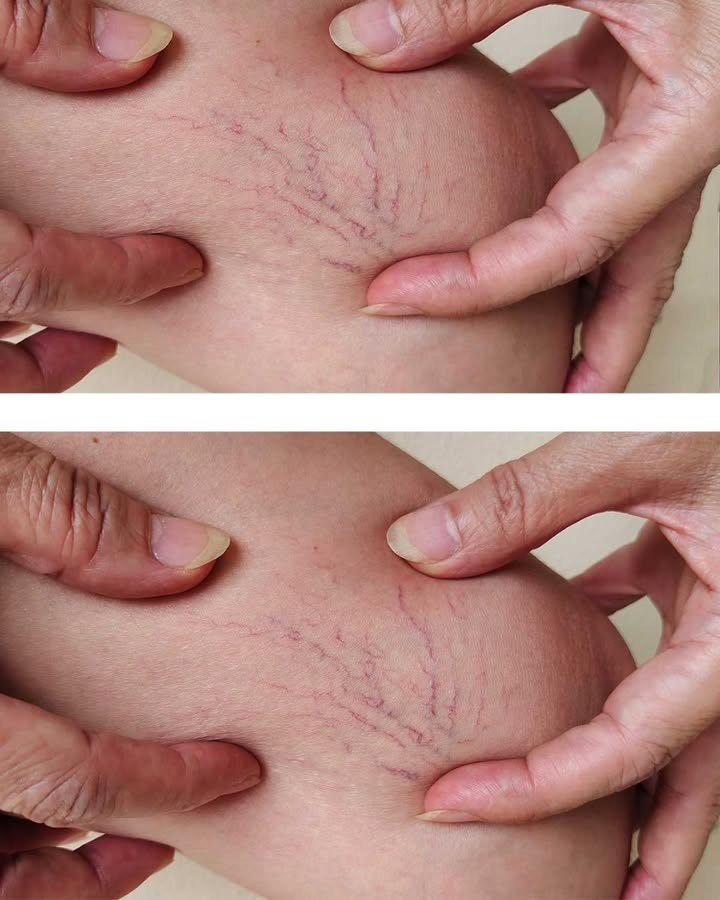The appearance of red veins is usually due to venous insufficiency—the valves inside your leg veins that keep blood flowing upward become weak. Gravity pulls blood down, causing pooling and pressure. That pressure makes small surface veins enlarge and become visible.
Other contributing factors:
Genetics: If your parents had visible leg veins, you’re more likely to develop them.
Hormones: Estrogen and progesterone relax vein walls. That’s why women often notice them during pregnancy or hormonal changes.
Standing or sitting long hours: People who work on their feet or sit at a desk a lot have higher risk.
Obesity: Added pressure on leg veins impedes circulation.
Sun damage: UV exposure thins skin, making surface veins more visible.
3. When to worry
Usually, small red veins are not a medical emergency.
But you should seek urgent or sooner medical care if you notice any of the following:
Sudden pain, warmth, or swelling in the leg (could signal a clot).
Red veins that are raised, hard, or tender to touch.
Fever, chills, or red streaks moving upward (possible infection).
Ulcers, sores, or skin darkening near the veins.
Significant swelling or color change in one leg only.
If none of these apply, it’s reasonable to manage symptoms and monitor until your scheduled doctor’s appointment.
4. What you can do right now (home and lifestyle care)
